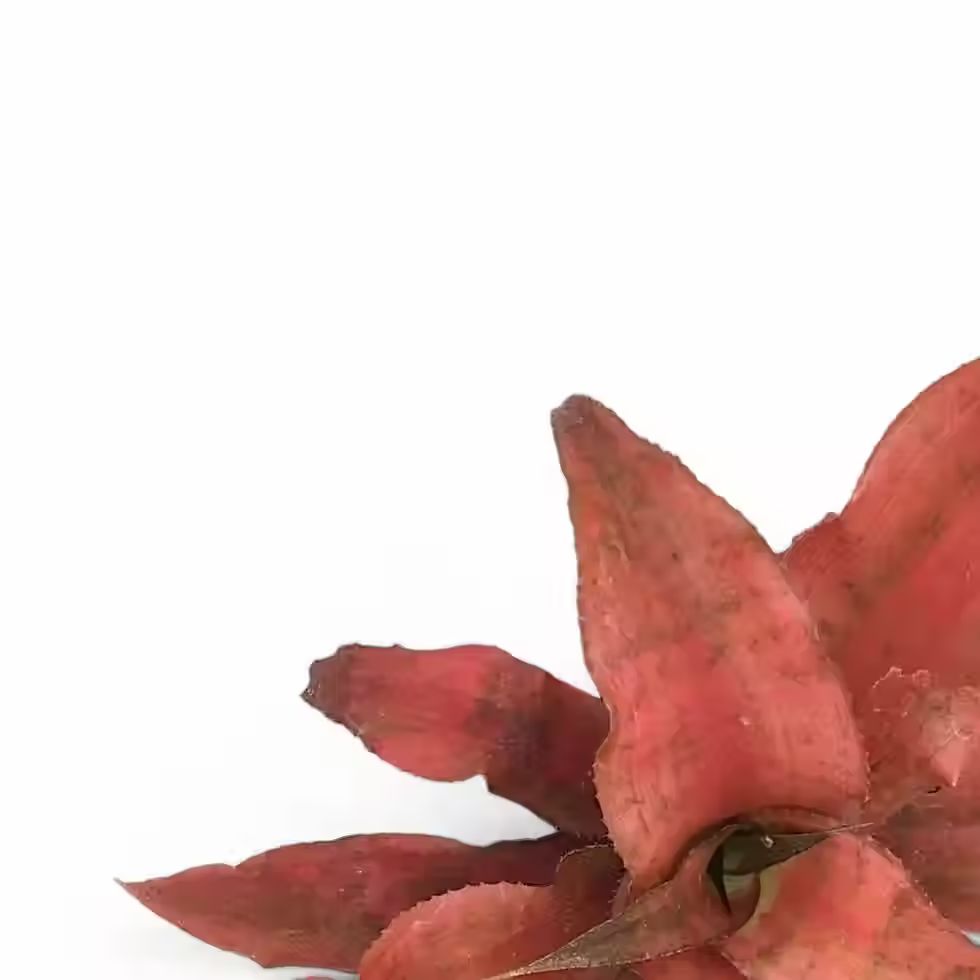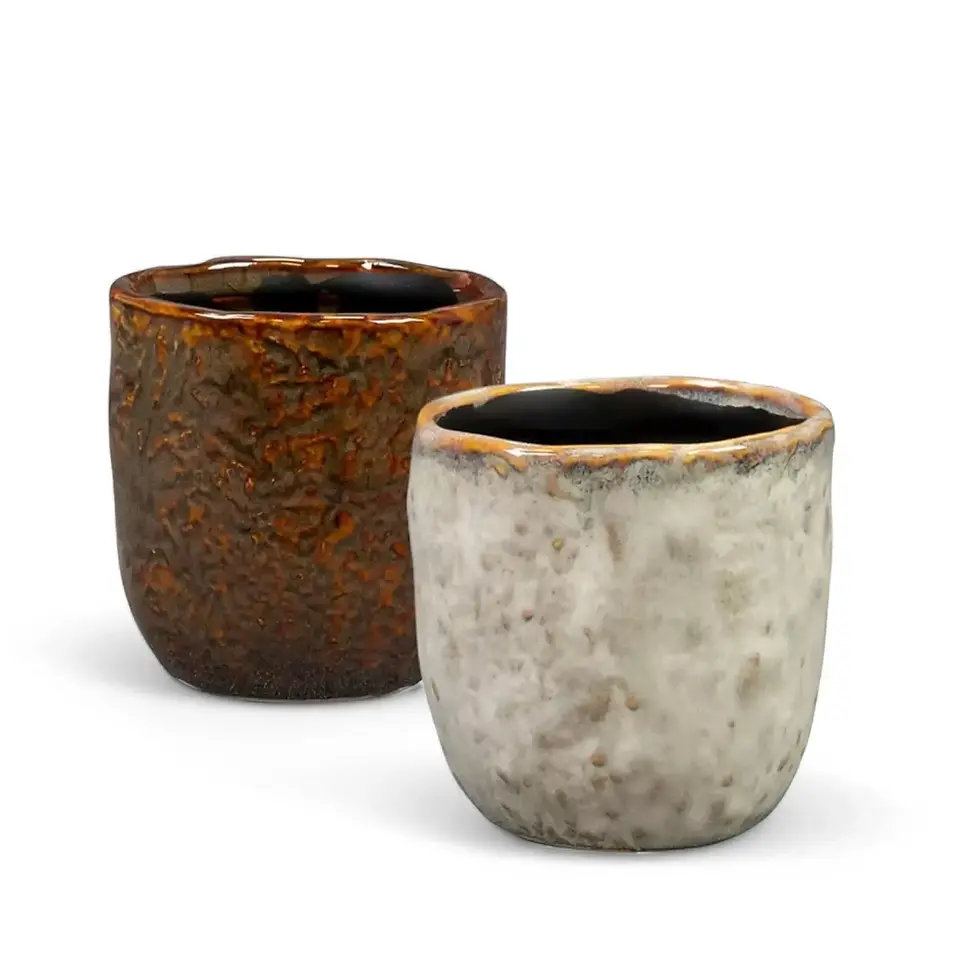Begonia rex 'Escargot' - Spiral Foliage and Care Guide
Begonia rex 'Escargot' is a visually striking houseplant, renowned for its spiral-shaped foliage that unfurls in a mesmerizing curl, resembling a snail’s shell. The silvery-green leaves, edged with deep forest green, boast a velvety texture that enhances their intricate pattern. This plant thrives in indoor spaces, maintaining a compact, bushy growth habit that makes it a perfect choice for shelves, desktops, or terrariums. Given the right conditions, Begonia rex 'Escargot' rewards growers with lush, vibrant foliage.
Begonia rex 'Escargot' - Features and Growth
→ Unique Spiral-Shaped Leaves
Leaves curl into a perfect spiral, mimicking a snail’s shell, giving it an artistic and decorative appeal.
→ Velvety, Contrasting Foliage
Silvery-green leaves with deep green edges create a bold contrast and luxurious texture.
→ Compact, Mounding Growth
Ideal for small indoor spaces, reaching 30-40 cm in height and spread.
→ Ornamental Value
Grown primarily for its foliage, rarely flowers indoors, making it a low-maintenance decorative plant.
Begonia rex 'Escargot' - Natural Habitat and Growth Conditions
Native to the humid, tropical regions of northern India, China, and Vietnam, Begonia rex thrives in shaded forest floors with high humidity and moderate temperatures.
- Growth Habit: Bushy, mounding form.
- Growth Rate: Moderate.
- Lifecycle: Perennial.
- Toxicity: Toxic to pets and humans due to insoluble oxalates.
- Best Placement: Prefers a humid environment, away from drafts and direct airflow from heaters or air conditioners.
Begonia rex 'Escargot' - Essential Care Guide
→ Light and Placement
- Prefers bright, indirect light to maintain vibrant leaf coloration.
- Too much direct sun can scorch the leaves.
- Low light may cause the leaf colors to fade and slow growth.
→ Watering and Soil
- Keep soil consistently moist but never waterlogged.
- Water when the top 2-3 cm of soil feels dry.
- Avoid overhead watering to prevent fungal diseases.
→ Humidity and Temperature
- Requires 60-80% humidity for best growth.
- Ideal for terrariums, humid rooms, or near a humidifier.
- Avoid misting leaves, as excessive moisture can encourage mildew.
- Prefers temperatures between 18-26°C.
- Avoid temperatures below 15°C, as it is cold-sensitive.
→ Pot and Repotting
- Select a shallow pot with drainage holes, as the plant has a fibrous root system.
- Repot every 1-2 years to refresh the soil and prevent root compaction.
→ Fertilization and Growth Support
- Use a balanced, diluted liquid fertilizer every 4-6 weeks during the growing season.
- Avoid excessive nitrogen, which can lead to leggy growth.
→ Propagation Methods
- Best propagated through leaf cuttings, using a healthy mature leaf.
- Cuttings can be rooted in soil, sphagnum moss, or water before transplanting.
- Each cutting should include part of the main vein for best success.
→ Semi-Hydroponics
- Adapts well to semi-hydroponic setups (LECA) with careful moisture control.
→ Pruning and Maintenance
- Regularly remove damaged or yellowing leaves to promote healthy new growth.
- Pinching back stems encourages a fuller, more compact plant.
Begonia rex 'Escargot' - Common Issues and Solutions
→ Yellowing Leaves
Cause: Overwatering.
Solution: Ensure the pot has proper drainage and reduce watering frequency.
→ Browning Leaf Edges
Cause: Low humidity or excess fertilizer.
Solution: Increase humidity and flush soil occasionally to remove salt buildup.
→ Fungal Issues (Powdery Mildew, Leaf Spot)
Cause: Excess moisture and poor air circulation.
Solution: Improve airflow and avoid wetting leaves. Use a fungicide if necessary.
→ Pests and Treatments
- Spider mites - Fine webbing and dry, speckled leaves. Solution: Increase humidity and wipe leaves with a damp cloth or microfiber dusting gloves for plants.
- Mealybugs - White, cotton-like masses. Solution: Remove manually or use insecticidal soap.
- Thrips - Distorted growth and silver streaks. Solution: Treat with neem oil or biological pest control.
- Fungus gnats - Overly moist soil. Solution: Let the top layer dry out and use sticky traps.
Begonia rex 'Escargot' - Additional Considerations
- Can tolerate brief periods of drought but thrives with consistent moisture levels.
- Highly sensitive to cold drafts—keep in a stable, warm environment.
- Prone to edema (blisters on leaves) if overwatered in low light conditions.
Begonia rex 'Escargot' - Name and Botanical History
→ Etymology and Meaning
The Begonia genus was named after Michel Bégon, a French plant collector. The species name rex means "king," referring to its ornate and regal foliage. The cultivar name 'Escargot' comes from the French word for "snail," reflecting its unique spiraled leaf pattern.
Begonia rex 'Escargot' - Frequently Asked Questions
→ Can Begonia rex 'Escargot' be grown in low light?
It prefers bright, indirect light. In low-light conditions, leaf color may fade, and growth may become weak and leggy.
→ Why are my Begonia leaves curling or wilting?
Often due to overwatering or underwatering. Check the soil moisture and adjust watering accordingly.
Order Your Begonia rex 'Escargot' Today!
Add a touch of botanical artistry to your collection with Begonia rex 'Escargot'. Its striking spiral foliage and compact growth make it a stunning addition to any indoor space.
Begonia rex 'Escargot'
Begonia rex 'Escargot' comes in following sizes:
Baby Plant – is approximately 15 cm tall and comes in a ⌀ 6 cm pot.
M – is approximately 20 cm tall and comes in a ⌀ 12 cm pot.

























































